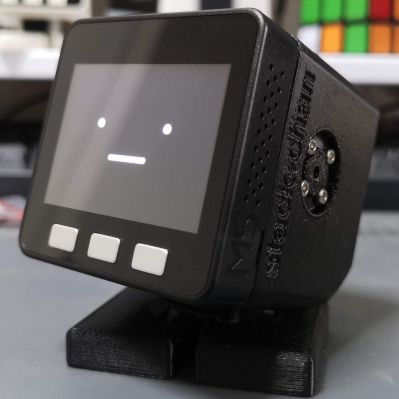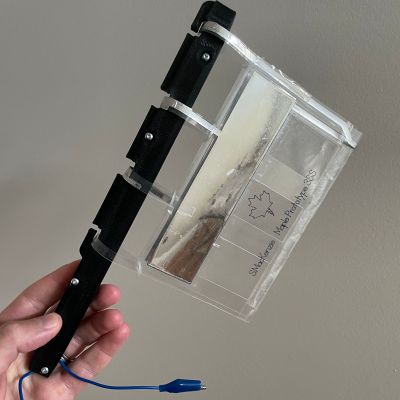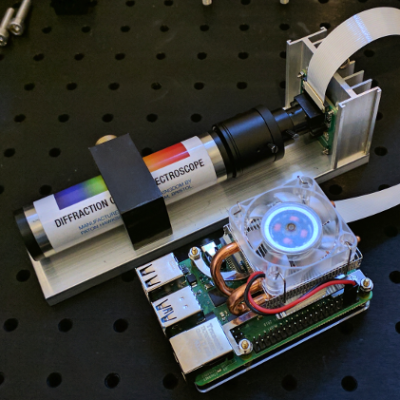FlowIO Platform, a modular pneumatics controller for soft robotics and smart material projects, took home Grand Prize honors at the 2021 Hackaday Prize. Aside from the prestige of coming out on top of hundreds of projects and bragging rights for winning the biggest hardware design challenge on Earth, the prize carries an award of $25,000 and a Supplyframe DesignLab residency to continue project development. Four other top winners were also announced at the Hackaday Remoticon virtual conference on Saturday evening.
In a year full of challenges, this year’s Hackaday Prize laid down yet another gauntlet: to “Rethink, Refresh, and Rebuild.” We asked everyone to take a good hard look at the systems and processes that make the world work — or in some cases, not work — and reimagine them from a fresh perspective. Are there better ways to do things? What would you come up with if you started from a blank piece of paper? How can you support and engage the next generation of engineers, and inspire them to take up the torch? And what would you come up with if you just let your imagination run wild?
And boy, did you deliver! With almost 500 entries, this year’s judges had quite a task in front of them. Each of the five challenges — Refresh Displays, Rethink Work-From-Home Life, Reimagine Supportive Tech, Redefine Robots, and Reactivate Wildcard — had ten finalists, which formed the pool of entries for the overall prize. And here’s what they came up with.
Grand Prize Winner: FlowIO Platform
We tend to think of robots in terms of rigid frames with electric actuators. FlowIO Platform aims to change that thinking, and kickstart a design revolution in wearables, collaborative robots, and just about any task where a softer, gentler robot would be useful. The key to these applications is pneumatics, and FlowIO makes it easy to connect the pumps, valves, actuators, and sensors necessary to bring pneumatics projects to life. The FlowIO main module has five pneumatic channels, and connects up to other modules that support pumps, sensors, and general IO — it’s like a Lego set for pneumatics!
FlowIO aims to make pneumatics as easy to add to a project as it is to spin up an Arduino and a couple of steppers. The principal on the project, Ali Shtarbanov, came on our Hack Chat a few weeks ago to talk about the applications of pneumatics in soft robotics in general, and the niche in that ecosystem that FlowIO fills specifically. We can say confidently that there’s a lot of pent-up interest in pneumatics, which seems to be due to the lack of an accessible, affordable integrated pneumatics platform. FlowIO changes all that, and with a well-earned Grand Prize under its belt, we’re looking forward to a spate of projects that show just what pneumatics can do.
-
2nd Place: Stack-chan
Coming in at second place with a $15,000 prize is Stack-chan, an adorable, open-source companion robot. The palm-sized bot is the perfect desktop companion, but since it’s completely open and hackable, what you do with Stack-chan is totally up to you. Based on the ESP32 powered M5Stack modular IoT development platform, creator Shinya Ishikawa sees Stack-chan as a jumping-off point for everything from a robot butler to sales and marketing tools, as well as companion robots and robot pets.
-
3rd Place: Flexible Circuit Wind Generator
It’s hard not to look at a vast wind farm and its towering wind turbines without feeling both awe at the engineering involved as well as a sense of, “There has to be a better way.” Stuart MacKenzie’s flexible wind generator aims to explore the possibilities of “aeroelectrostatic” electricity. He uses folded polyester films with conductive decals to make wind-activated variable capacitors that can power small loads when the wind waves them around.
-
4th Place: Raspberry Pi Spectrometer
Easy to build, inexpensive, and open to hacking: those are just a few things to love about Les Wright’s PySpectrometer. We featured the Raspberry Pi-based instrument back when it first came out and applauded its simplicity — at its heart, it’s a Pi Cam looking at a diffraction grating — as well as its versatility. We also like how it puts the power of spectroscopy into the hands of students and hobbyists alike, all on a budget.
-
5th Place: Direct Granules Extruder
Anyone who has had to shell out for 3D printing filament has probably thought of ways to put the vast amount of plastic waste we generate back into use, but Norbert Heinz, aka “Homofaciens” on YouTube, actually did it with his direct granules extruder. The idea seems simple enough: grind up plastic waste, melt it back down, and extrude it directly in a modified 3D printer. But in practice, there are a ton of challenges to overcome. Norbert is working past those issues, and has managed some pretty amazing prints considering his extrusion auger is a modified wood screw. It even prints sugar!
Okay, Now It’s Your Turn
As with every Hackaday Prize, the work has only just begun — we don’t sit on our laurels around here! Part of the reason for the Hackaday Prize is to be an inspiration; to set a high bar and expect our winners — and the rest of the community — to jump over it. We want everyone to take what the 2021 Hackaday Prize winners — and all the other entrants — have done and run with it. Look at each of these projects and find something in it that resonates with you. Take that and use it to improve your projects, or learn a new skill, or explore a fascinating aspect of our world that you never knew about. It’s your world, so hack it!
Congratulations to all of the 2021 Hackaday Prize winners, and a heartfelt thanks to everyone involved in running the Prize and judging the entries, as well as to everyone who took the time to enter. We couldn’t do it without you!
Credit: Source link

























